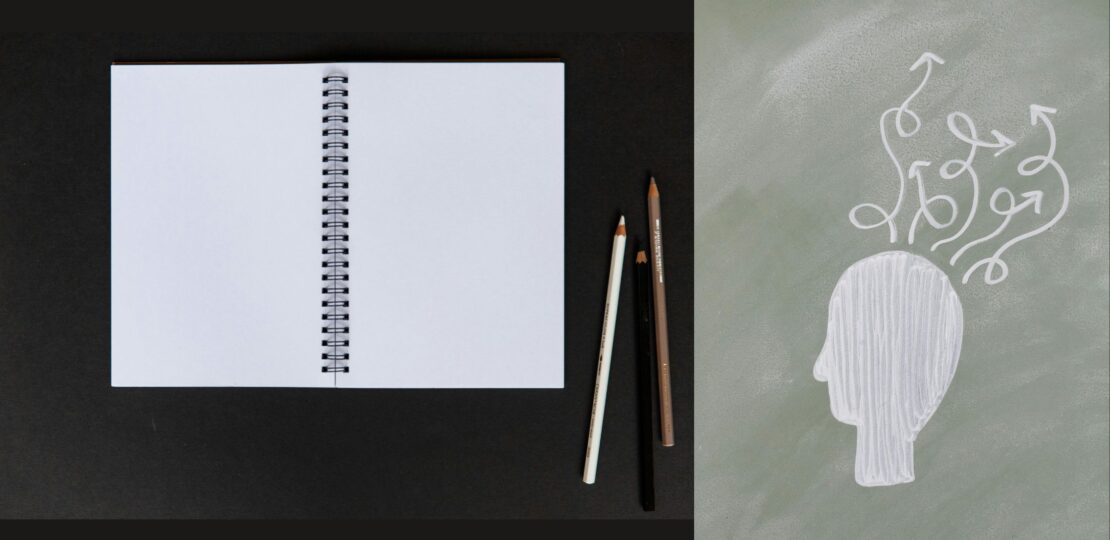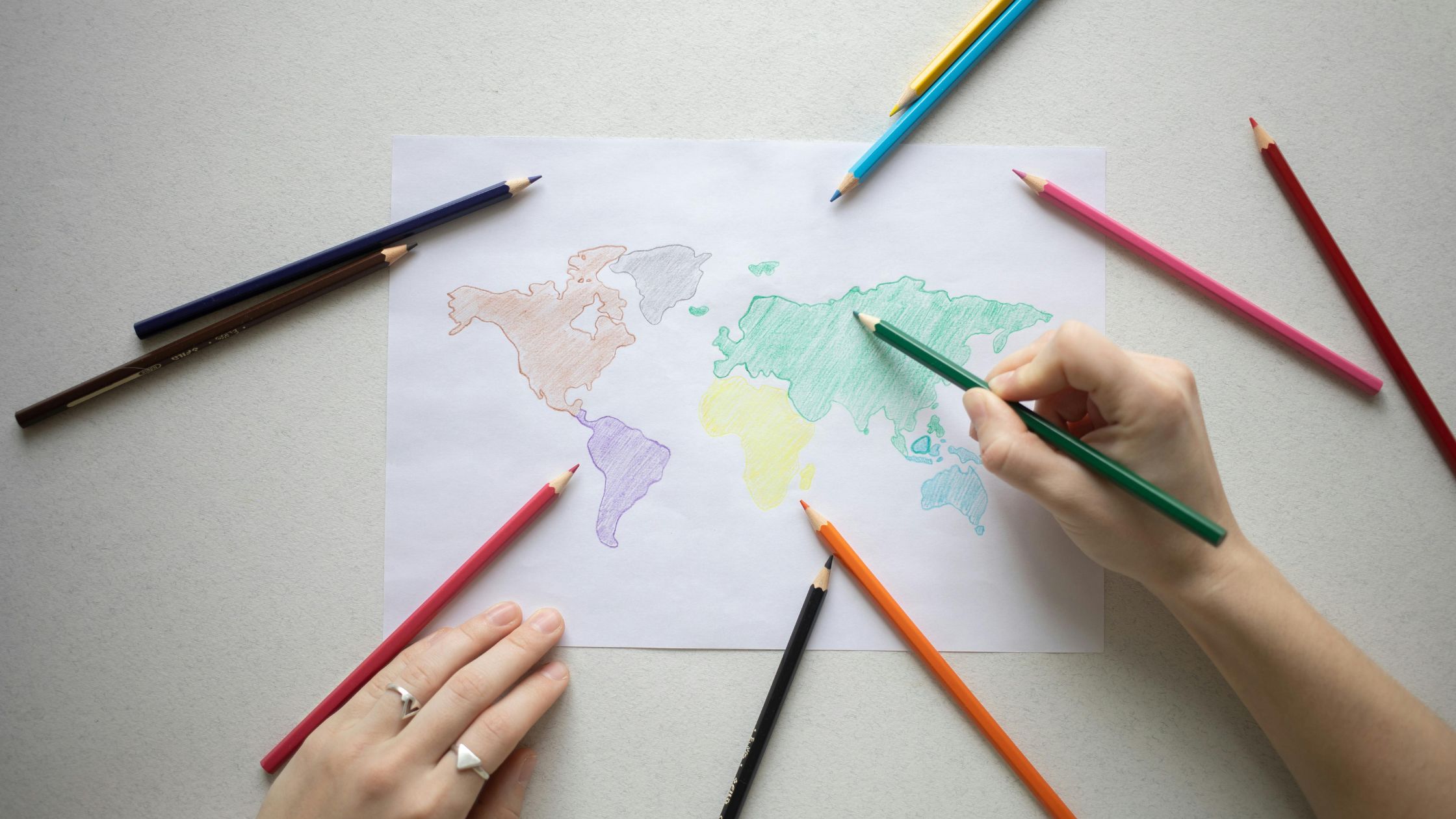

Introduction to Drawing Ideas
Drawing is a powerful form of self-expression that transcends boundaries, allowing artists to convey emotions, ideas, and stories through visual representation. Whether one is a seasoned professional or a novice just beginning their artistic journey, the importance of drawing ideas cannot be overstated. Drawing ideas act as a stimulus for creativity, providing direction and inspiration that can energize an artist’s practice.
For many artists, the struggle with creative blocks can be discouraging and limiting. This is where a curated list of drawing ideas comes into play; it serves as a valuable resource to help overcome these challenges. By having a diverse set of concepts and themes to draw from, artists can seamlessly rekindle their enthusiasm and push past the limitations of their imagination.
Exploring a wide range of drawing ideas encourages artistic growth and experimentation. When artists try different styles, subjects, and techniques, they not only expand their skills but also discover unique facets of their artistic voice. Engaging with various concepts—be it still life, character design, abstract forms, or landscapes can ignite a renewed sense of purpose and excitement within the creative process.
- 【Professional And Complete Drawing Sketching Set】: 76 Pack Art Pencil Set Include 3 White Charcoal Pencils, 7 Black Char…
- 【Extra Drawing Sketching Supplies Kit 】: Along with 1 Refillable Water Brush Pen, 1 Vinyl Eraser, 1 Kneaded Eraser, 1 Sa…
- 【Premium Drawing Kit with Unique 3-Color Sketch Pad】 6 x 9″, SPIRAL BOUND, 100GSM, 50 Pages (30 pages white, 10 pages to…
Moreover, sharing drawing ideas can foster a sense of community among artists. In an interconnected world, artists can inspire one another through collaboration and discussions regarding their unique interpretations of drawing concepts. By exploring the thoughts and approaches of fellow artists, individuals can enrich their own creative repertoire, learning new ways to envision and create artworks.
In conclusion, drawing ideas serve as essential tools for both beginners and professionals. These ideas not only stimulate creativity but also help artists navigate the occasional patches of uncertainty. As one delves into the myriad possibilities of drawing, the journey of artistic exploration is bound to yield both personal satisfaction and profound artistic development.
Nature-Inspired Drawing Ideas
Drawing inspiration from nature can significantly enhance your creative endeavors and allow you to observe the world differently. Nature is a bountiful source of ideas, from the intricate details of plants and flowers to the vastness of landscapes and the majesty of animals. By observing your surroundings, you can translate these observations into captivating drawings that convey the essence of the natural world.
To begin, consider exploring various landscapes. Whether it is a serene lake, a towering mountain, or a lush forest, each environment offers unique elements to capture on paper. Focus on the way light interacts with the landscape at different times of the day. Early morning fog, vibrant sunsets, and the shadows cast by trees can all create dynamic scenes to inspire your drawings. Try sketching the silhouettes of trees and rocks, as well as the textures of the ground, to add depth and authenticity to your artwork.
Observing wildlife can also provide rich material for your drawings. Spend time at a local park or wildlife reserve, capturing the movement of animals in their natural habitat. Pay attention to their postures, expressions, and interactions. Drawing from life can help you develop your understanding of anatomy and proportion, making your representations more realistic and engaging.
Plants, flowers, and even natural phenomena such as clouds or rainbows present another set of inspiration for creative drawing. Experiment with different shading and coloring techniques to highlight the delicate structures of leaves and petals. Use cross-hatching or stippling to depict shadows and light nuances, effectively bringing your drawings to life.
By immersing yourself in the beauty of nature, you unlock endless possibilities for artistic expression. Appreciate the details, observe with intention, and let the world around you guide your creative process.
Character and Creature Design Ideas
Exploring the realm of character and creature design presents a thrilling opportunity to unleash your creativity. One effective method for developing unique characters is to delve into their personality traits. Consider what motivates your character, what fears they might harbor, and how these factors influence their actions and choices. For instance, a character exhibiting a strong sense of justice could be designed with physical attributes that reflect resilience, such as a robust frame or a protective demeanor.
Physical attributes should not only enhance visual appeal but also serve as a narrative tool. Think about combining distinctive features from different species or cultural influences to create extraordinary beings. A creature could sport the scales of a dragon along with the graceful wings of a bird, invoking a sense of wonder and intrigue. The interplay of traits can provide depth and originality, setting your artwork apart from conventional designs.
Moreover, a compelling backstory enriches the character and creature design by adding context and meaning. For example, what life experiences have shaped them? What does their environment look like? Creatures born from post-apocalyptic settings might have adaptations for survival, such as camouflage or heightened senses. Engage in exercises that encourage you to invent characters from prompts, like “a misunderstood villain” or “a guardian of the forest,” to spur your imagination and build unique narratives.
Ultimately, merging creativity with storytelling can lead to designs that resonate with viewers. Embrace the challenge of character and creature design as a platform for exploring thematic elements and personal expression, allowing your creations to come alive in myriad ways. This combination of personality, attributes, and narrative will cultivate originality and inspire others in their artistic journeys.
Exploring Emotions through Drawing
Drawing serves as a powerful medium for expressing emotions, enabling artists to externalize their innermost feelings and experiences. This visual art form transcends verbal communication, allowing individuals to depict a spectrum of emotions such as joy, sadness, anger, and tranquility. When engaging with drawing, artists can explore the intricate relationship between colors, shapes, and emotional states, facilitating a deeper understanding of their feelings.
One effective way to evoke emotions in drawing is by utilizing specific color palettes. For instance, warm colors like red and orange may convey feelings of passion and energy, whereas cooler colors such as blue and green often represent calmness and stability. By selecting hues that resonate with the intended emotion, artists can enhance the overall impact of their artwork. Furthermore, the use of contrasting colors can emphasize emotional tension, drawing the viewer’s attention to the underlying feelings depicted in the piece.
Shapes also play a crucial role in conveying emotions. For instance, sharp, angular lines may evoke feelings of anger or anxiety, while soft, rounded shapes can impart a sense of comfort and tranquility. When integrated together, color and shape create a unique visual language that expresses the artist’s emotional voice. Therefore, as part of one’s artistic practice, it is essential to consciously experiment with these elements to evoke desired emotional responses in the audience.
To inspire emotional exploration through drawing, artists may consider the following prompts: depict a moment of joy experienced during a family gathering, illustrate the feeling of sadness caused by a farewell, or portray the intensity of anger inspired by an injustice. By reflecting upon these moments and consciously interpreting them through art, individuals can harness their creativity to explore and share their emotions more authentically.
Everyday Objects: Finding Inspiration in the Mundane
Finding inspiration in our daily surroundings can transform ordinary experiences into extraordinary artistic endeavors. Everyday objects, often overlooked, possess unique qualities that can spark creativity in artists of all levels. These mundane items, ranging from kitchen utensils to stationery, serve as ideal subjects for still life compositions. Embracing this concept encourages individuals to heighten their awareness of the environment and to appreciate the beauty embedded within simplicity.
To begin, artists can select a variety of everyday objects that catch their eye—be it an old book, a vibrant coffee cup, or a succulent in a pot. Arranging these items in an engaging composition can generate multiple perspectives for drawing. Experimenting with lighting also plays a crucial role; natural light can create interesting shadows and highlights that enhance the overall aesthetic of the piece. For instance, placing a colorful fruit bowl near a window can produce delightful contrasts between light and shadow, enriching the drawing’s depth and dimension.
Furthermore, consider the textures and shapes of the chosen objects. A crinkled piece of paper or the smooth contour of a glass jar can provide ample inspiration to experiment with various techniques, such as shading or line work. Artists can take the opportunity to practice their observational skills, studying how light interacts with different surfaces and how each object relates to the others in the arrangement. Incorporating personal stories or emotional connections to the chosen items might also add significance to the artwork, allowing for a deeper expression.
Through dedicated observation and a willingness to turn the mundane into the remarkable, artists can uncover profound inspiration within their everyday surroundings. Harnessing the potential of familiar objects can lead to a richer artistic experience, fueled by an appreciation for the simplicity that life offers.
- [Customize Your Workflow]: The 6 easy accessable press keys on the H640P drawing tablet for pc can be customized to your…
- [Nature Pen Experience]: The included battery-free stylus PW100 with 8192 levels of pressure sensitivity is light and ea…
- [Compact and Portable]: H640P digital drawing tablet uses a compact design with 0.3 inch in thickness and 1.41 lbs in we…
Dreamscapes: Drawing from Imagination
Exploring the depths of your imagination can unveil a treasure trove of inspiration for your artistic endeavors. The realm of dreams serves as a rich canvas for creativity, allowing artists to translate their subconscious experiences into surreal drawings. To effectively harness this source of inspiration, it is beneficial to develop techniques that assist in remembering and interpreting dreams.
One effective method to enhance dream recollection is maintaining a dream journal. Placing a notebook beside your bed encourages you to jot down your dreams immediately upon waking, capturing those fleeting moments before they slip away. Note any vivid imagery, emotions, or unusual narratives that arise in your dreams. Over time, you may notice themes or symbols that recur, providing a foundation for your artistic interpretations.
When transitioning from dream recollection to visual representation, consider the unique landscapes and fantastical elements that typically characterize our dreams. Begin by sketching the scenes from your dreams, focusing on capturing the ethereal quality that often permeates the dream world. Experiment with exaggerated proportions, unusual color schemes, or unexpected combinations of objects to evoke a sense of surrealism in your drawings. Utilize contrasting shades and soft lines to create dreamlike effects, enhancing the otherworldly feel of your artwork.
Artists can also explore techniques such as automatic drawing, which encourages spontaneity and a connection to the subconscious. This technique involves drawing without a premeditated concept, allowing the hand to move freely across the page. This practice can yield unexpected results that might spark new ideas or interpretations of your dreams, helping you to develop a unique visual style.
Incorporating elements from your imagination into your drawings not only enriches your artistic repertoire but also fosters a deeper connection to your creative process. By diving into the dreamlike landscapes and embracing the whimsical aspects of imagination, you can unlock a new dimension of creativity that invites viewers into a world beyond the ordinary.
Cultural and Historical Influences in Drawing
Throughout history, artists have drawn inspiration from their surroundings, including the rich tapestry of cultural and historical influences. Each culture and historical period presents unique themes, motifs, and narratives that can stimulate creative drawing ideas. With an extensive array of traditions, folklore, and historical events available, artists can explore multiple avenues to enhance their work by integrating these elements.
For instance, the intricate designs of indigenous art can evoke curiosity about native landscapes and stories. Artists might consider capturing the essence of traditional symbols and their meanings within a new context. Similarly, the vibrant elements found in Eastern cultures, such as Chinese brush painting or Indian mandalas, can inspire the incorporation of fluid lines and bold colors, transforming a simple drawing into a culturally enriched piece.
Moreover, artists should reflect on historical events that resonate on a personal or societal level. For example, the Renaissance period birthed a surge of creativity through the revival of classical themes. One can explore this by creating drawings centered around the prominent figures of that time, such as Leonardo da Vinci or Michelangelo, or by portraying significant events like the signing of the Magna Carta, emphasizing the impact these moments had on art and society.
Additionally, themed prompts can serve as useful tools for artists seeking to immerse themselves in cultural heritage. Drawing prompts that encourage research into various cultures might incorporate aspects like costume design, architecture, or folklore tales. This approach not only broadens an artist’s perspective but also fosters a deeper understanding of the diverse narratives that shape our world. By embracing these cultural and historical influences, artists can produce work that is not only visually striking but also rich in meaning and context.
Utilizing Drawing Challenges and Prompts
In the pursuit of enhancing one’s artistic skills, drawing challenges and prompts serve as invaluable resources. These activities encourage individuals to step outside their comfort zones, explore new techniques, and engage with a vibrant community of fellow artists. Drawing challenges, such as Inktober, which takes place every October, invite participants to create a drawing every day of the month based on specific themes or prompts. This not only fosters consistency in practice but also helps artists expand their creative boundaries.
Another notable example is the 100 Day Drawing Challenge, which encourages artists to commit to daily drawing over a span of 100 days. This initiative can significantly boost artistic confidence, as artists witness their improvement over time. Each day’s prompt could range from simple objects to complex themes, allowing for a diverse range of expressions and styles. By participating in these organized events, artists can find motivation in the shared experiences of others, leading to a sense of belonging and engagement within the art community.
Additionally, online platforms offer a plethora of drawing prompts accessible to anyone seeking inspiration. Websites and social media pages dedicated to art often share weekly or monthly drawing prompts. Here, artists can find new ideas and themes to explore, ensuring they never run out of inspiration. For those looking to personalize their artistic journey, setting personal challenges is a productive approach. Artists might decide to focus on a particular technique, such as shading or color theory, and create prompts tailored to practice those skills.
By embracing drawing challenges and prompts—whether through community events or personal initiatives—artists can cultivate their creativity, develop discipline, and enhance their art-making process. Each prompt serves as a stepping stone toward deeper exploration and growth in the artistic domain.
Conclusion: Embracing Your Unique Artistic Journey
As we reflect on the myriad of drawing ideas explored throughout this post, it becomes evident that the journey of creativity is deeply personal and unique to each individual. Art is not merely a discipline but a form of self-expression that allows one to convey emotions, thoughts, and perspectives that are singular to each artist. The diversity of drawing concepts, from still life to abstract forms, empowers individuals to explore their imagination without constraints, encouraging a more profound connection to their artistic self.
It is essential to recognize that creativity thrives in an environment of experimentation. The artistic process involves not only the act of drawing but also the learning and growth that accompany it. By embracing mistakes and celebrating successes, artists can discover their unique voice. The drawing ideas shared in this post serve as a foundation for experimentation, and it is through these explorations that new styles and preferences emerge. Artists are urged to step outside their comfort zones and play with various techniques, mediums, and subjects, fostering an atmosphere of continuous learning and development.
Moreover, the importance of regular practice cannot be overstated. Engaging with your art consistently cultivates skill, enhances confidence, and ignites inspiration. Whether it be through daily sketches, themed challenges, or joining a local art group, these practices can significantly enrich one’s artistic journey. Remember, every artist evolves over time, and the unique perspectives and experiences that each individual brings are what make the world of art so vibrant and diverse. In conclusion, embrace your artistic journey fully, let your creativity flourish, and continuously explore the vast landscape of drawing ideas that await you.
- 🎨 Alcohol Based & Permanent Markers: 41 Vibrant Colors, alcohol-based ink. Excellent smudge-proof and waterproof qualiti…
- 🎨 Dual Tips & Round Pen Holder – Broad chisel (approx. 1-7mm) and fine point (approx. 0. 7mm) nibs for precise highlight…
- 🎨 COLOR-CODED CAPS & BONUS CASE: The color-coded caps allow for ease in organization and to identify colors quickly. Erg…
RELATED POSTS
View all





